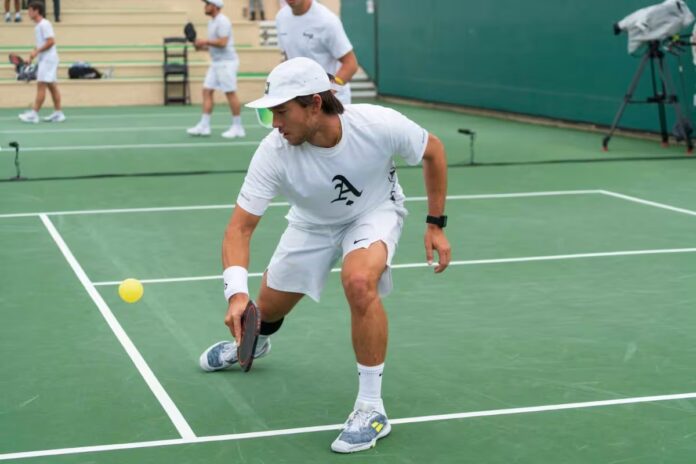Master the Reset Shot in pickleball: Achieving a high level of control on the pickleball court requires mastering the subtle art of resetting shots. The reset is a critical technique used to counter aggressive speed-ups, allowing players to diffuse high-paced rallies and regain a balanced position. Players looking to refine this skill can benefit from a straightforward drill designed to improve reset accuracy and consistency. This approach focuses on blending speed-up shots with controlled resets, using targeted techniques to develop touch and precision.
The Reset Drill : Foundation of Control
The primary goal of the reset drill is to practice hitting speed-ups and then gently resetting the ball over a mock net into the kitchen area. This exercise simulates real-game scenarios where a quick reaction is needed to neutralize the opponent’s aggressive play. To start, players should drop the ball, execute a speed-up, reset the ball softly, and then catch it. Repeating this sequence allows players to gradually build the muscle memory needed for controlled resets.
As proficiency increases, the drill can be adjusted to include continuous repetitions in a speed-up-reset rhythm, providing a more realistic and challenging practice environment. This progression not only hones a player’s resetting ability but also enhances their overall touch on the ball.
Mastering Paddle Face Position
A crucial component of a controlled reset is the positioning of the paddle face. When performing resets, players should angle the paddle slightly toward the sky rather than keeping it flat or too upright. This upward angle helps direct the ball into the kitchen while preventing it from diving into the net.
Most players tend to flatten their paddle face during resets, which can cause the ball to either fall short or fly too high. By adjusting the paddle face to a more upward position, players can better control the trajectory and landing spot of the ball. It is important to be mindful of this technique to ensure consistency in resets, especially during fast-paced exchanges.
Minimizing Follow-Through for Precision
Keeping the follow-through minimal is another key factor in executing successful resets. When the follow-through is excessive, it adds unnecessary pace to the shot, making it difficult to control. Instead, players should focus on absorbing the ball’s momentum by maintaining a loose grip on the paddle and limiting the follow-through motion.
The goal is to take the pace off the shot rather than add to it, allowing the ball to drop softly into the kitchen. This absorption technique can be particularly effective in neutralizing the opponent’s speed-ups, as it requires less arm movement and more reliance on a relaxed wrist. By reducing the follow-through, players can make their resets more precise and harder for the opponent to attack.
Utilizing Legs for Better Absorption
Proper use of the legs plays a significant role in managing reset shots. To effectively absorb the ball’s pace, players should keep their legs bent and stay low to the ground. This positioning allows the legs to act as shock absorbers, taking the impact of the ball while keeping the upper body and arms relaxed.
Instead of standing upright and relying on arm strength to hit the shot, bending the knees and using a loose wrist provides a softer touch. This approach helps players control the ball’s bounce and placement more effectively, making it easier to execute consistent resets under pressure.
News in Brief : Master the Reset Shot in pickleball
Developing mastery over resets in pickleball is a gradual process that requires dedication and repetition. By incorporating the reset drill into regular practice routines, players can strengthen their ability to control the ball in high-pressure situations. Techniques such as proper paddle face positioning, minimizing follow-through, and utilizing the legs for absorption contribute significantly to refining this essential skill.
Players who consistently work on these techniques will see improvements in their touch and control, enabling them to dictate the pace of rallies and gain a strategic advantage on the court.
ALSO READ: Master This Mental Approach in Pickleball for Unbeatable Focus and Strategy

